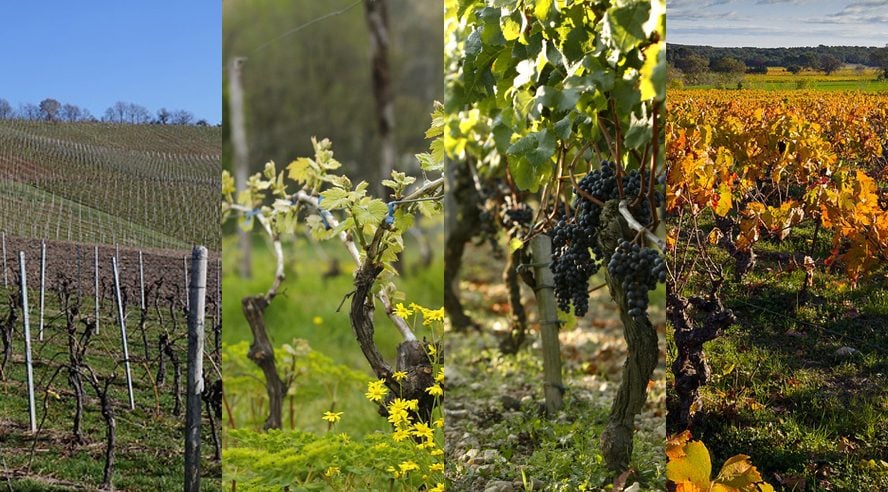
In Champagne as in other wine regions, the seasons set the pace region! Discover the cycle of the vines and the work of the Champagne winegrowers until the crucial moment of the harvest.
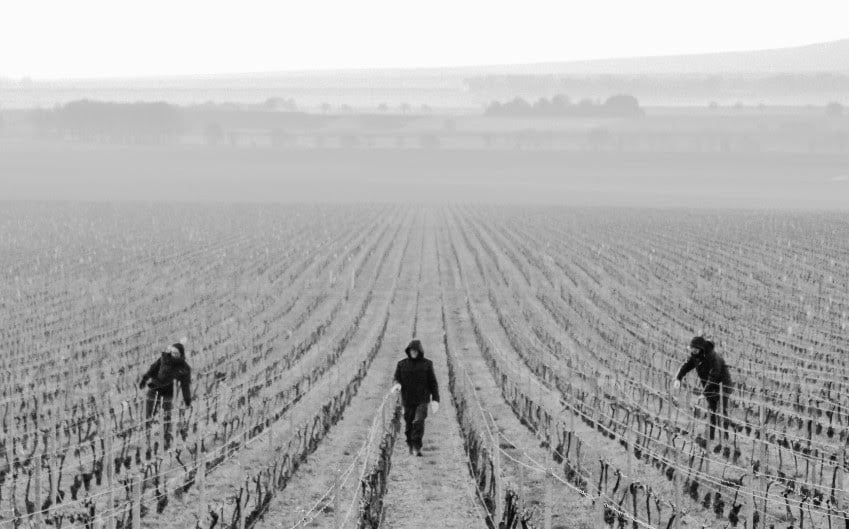
After the harvest, the vine loses its leaves and leaves the field open for the maintenance of the vines. This period is mainly devoted to pruning the vines.
Pruning is the most important work in the vineyard, as the quality of the harvest depends on its precision. It allows a certain vigour, fertility and above all maturity of the vine. Pruning conditions the development and blossoming of the vineyards.
The first operation after the harvest, pruning is a source of balance. It starts as soon as the leaves fall and stops between mid-December and mid-January in order to respect the vine’s winter rest. Before starting this first operation, the winegrower must evaluate the general aspect of the vine, its balance (number of buds, vertical or lateral positioning, overlapping…), but also the growth perspective for the coming year.
The first step in pruning is to ensure the best possible circulation of sap to the buds. It is important that the sap is distributed equally to all the buds. This is because the sap generates the vigour necessary for their growth. However, too much sap hinders fertility. This is why the winemaker must know how to balance vigour and fertility to obtain ideal quality.
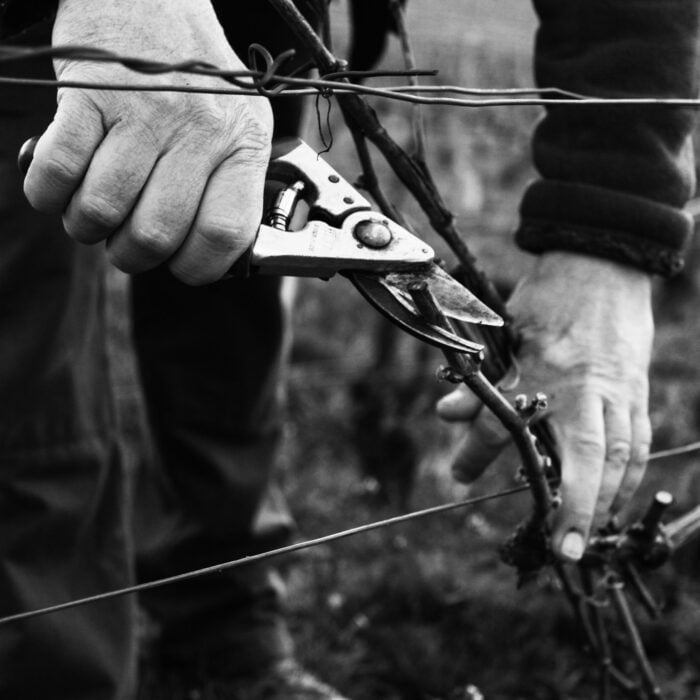
Secondly, pruning gives the vine its shape. It prepares it for future green pruning. The only objective is to avoid overcrowding of the foliage. To do this, good pruning maximises the capture of light rays and then favours the aeration of the grapes.
Finally, pruning has a decisive role to play in managing the life of the vine. If the vine produces too much, it becomes exhausted. The winegrower is therefore obliged to ensure that it is regulated. He regularly ” regenerates ” the vine by means of a process called ” rachet “. This is an obligatory step which consists of pruning short to concentrate the sap and which allows the buds of the vine to be revived.
Finally, the winter ends with the binding. This stage follows the pruning. The vine shoots, dried vine branches, are placed on either side of the support wire. This is a manual operation that requires precision and speed.
Period when the vegetation comes back to life. The stakes are set, the months and the work to come will be the guarantee of the harvest to come. This is why vineyard maintenance is a daily task and the attention of the winegrowers must be permanent.
During this season, four operations are necessary for the good development of the vine.
First of all, there is disbudding. This first stage takes place around mid-May. It consists of eliminating all the “greedy buds”, i.e. those that do not bear fruit, which grow on the frames and risk diverting the sap from the main buds. Once again, this is a manual operation involving several rounds of pruning and requires the expertise of the winemaker.
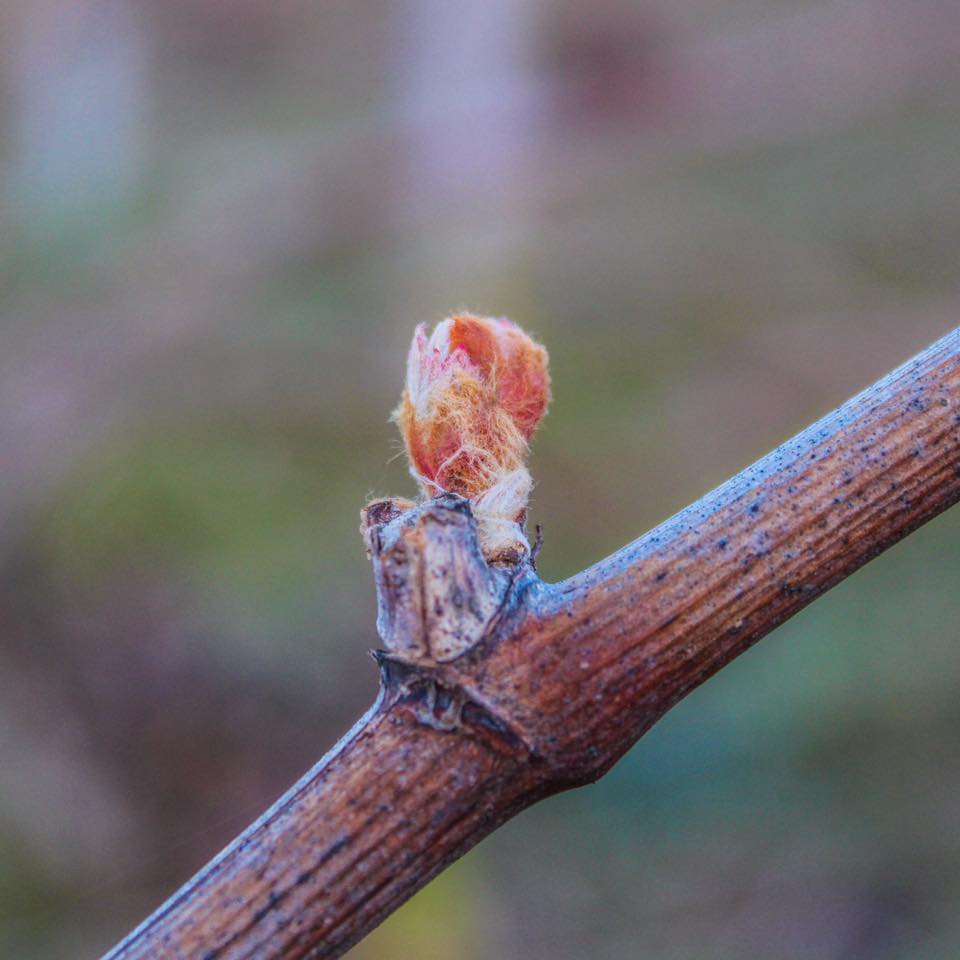
Then comes the stage of lifting, which takes place at the end of May. The branches grow until they reach 50 cm. From this point onwards, it is necessary to raise them and keep them in this vertical position. In order to achieve this process, lifting wires are placed 30 cm above the supporting wires. The vertical position of the vegetation gives the vine its architecture. It allows the winegrowers, grape pickers, cellar master and other people to pass through. It is a difficult operation because the branches are not all the same length and some are not naturally vertical.
The third stage, in June, is the trellising. This consists of separating the branches from each other and keeping them in line using wires and staples. This process prevents the leaves from being packed together. The aim is to ensure that the leaves get as much sunlight as possible and that they are well ventilated to prevent them from rotting. This is a fundamental operation for the Champagne vine. Indeed, its high planting density generates a large surface area spread out over the entire length. Once again, this is a long operation because it is carried out entirely by hand.
Finally, the last stage is the trimming, i.e. a “summer pruning”. This operation begins at the end of June or even the beginning of July. Throughout the summer, the winegrowers prune before or after flowering until the harvest. The operation is carried out over a minimum of two rounds, sometimes up to four. This is an essential step in Champagne as it prevents the vegetation from dominating the fruiting.
The weather conditions determine the quality of the harvest. Maintenance is a daily task to ensure the optimal development of the grapes.
The “débourrement” marks the start of vegetation. This season requires special and above all regular maintenance of the vine. This is why various tasks are carried out to control yields and improve quality. They are also called “les travaux en vert”, the same steps as during the spring, i.e.: disbudding, lifting, trellising and trimming.
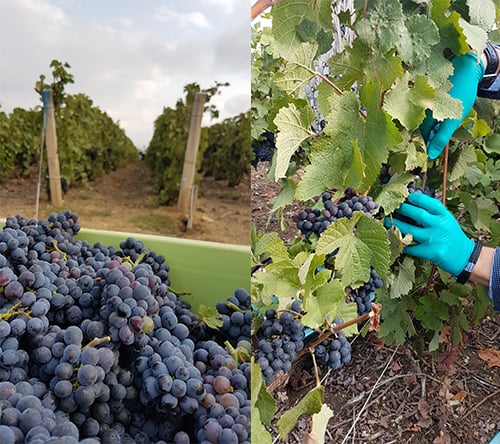
The time of the grape harvest has come! All the actors of the Champagne region are mobilized for nearly three weeks. The date is never defined in advance because it is the observation of the vines that decides. A crucial period, the future is decided in just a few days!
Following grape sampling and testing, the Association Viticole Champenoise (AVC) can, specify its wishes concerning the opening date of the harvest according to the communes during the preparatory meeting for the harvest.
As Champagne wine is produced from the pulp of the grape alone, the constituents necessary for quality and the formation of foam are in the centre of the grape berry, in the pulp (sugars, acids, etc…). As tradition dictates, the grapes are harvested entirely by hand. Indeed, the constraints to respect the grapes are the same as in the 18th century. For example, in order to avoid the extraction of the black colour present in the skin of the Pinot Noir grapes, the bunches of grapes must be picked whole and intact. They arrive whole at the press, in special crates to prevent maceration.
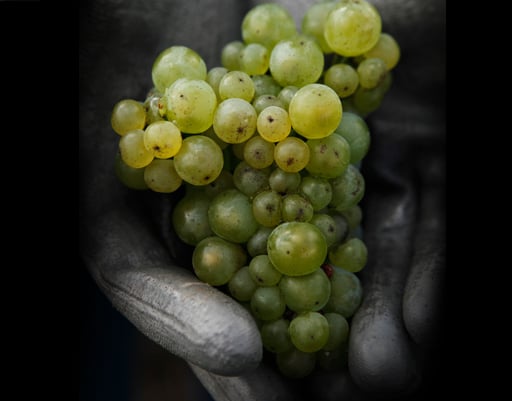
The different grape varieties of the Champagne region (Chardonnay, Pinot Noir and Pinot Meunier) ripen almost simultaneously. Very often, the harvest begins in September. In other years, they can start at the end of August or the beginning of October, and generally last for 3 weeks.
Each year, there are 120,000 grape-pickers, i.e. 4 for one hectare. Nearly 100,000 seasonal workers are housed and fed by the winegrowers and the champagne houses. The teams of pickers are commonly called “hordons”. These teams are often loyal and come back year after year, where each one has his own role: the picker, the carrier of small baskets, or the presser…
After the harvest, the cycle of the vine takes its course, indefinitely, to always give the best! Once the grapes have been harvested, it’s time for the cellar master and his teams to get to work. “According to Cyril Brun, Charles Heidsieck’s Cellar Master, “We have to leave ourselves a few more weeks before we can make a real judgement and know whether the year’s harvest will be of sufficient quality to give birth to a vintage!
More information about harvest yield regulations
According to the principle retained by the I.N.A.O., the quantities classified as AOC cannot exceed the maximum of 15,500 kg/ha.
This level is explained first of all by the high density of the vines in Champagne: 8,000 vines per hectare. However, behind this limit, we find a qualitative objective: to favour a better maturity of the grapes and thus increase their quality. Added to this is a limitation on the yield at pressing: a maximum of 102 litres of juice for 160 kilos of fruit. Finally, the yield is 66 hectolitres per hectare.
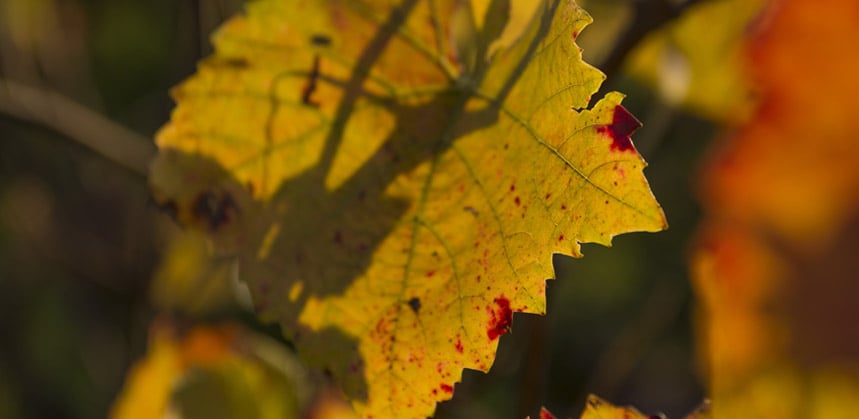
Photos credits : Comité Champagne, Maison Louis Roederer, Maison Ruinart
Our approach guarantees quality, simple ordering, secure payment and careful delivery within 5 to 10 days in Europe.
Since 2010, our carefully selected wines have come from the most prestigious Champagne Houses.
Our Champagne experts will advise you on the success of your private and professional projects.
Chic boxes, personalization, attentions... the pleasure is as much to offer as to receive.
Copyright 2022 © all rights reserved. Champmarket.


ALCOHOL ABUSE IS DANGEROUS FOR YOUR HEALTH. DRINK RESPONSIBLY.